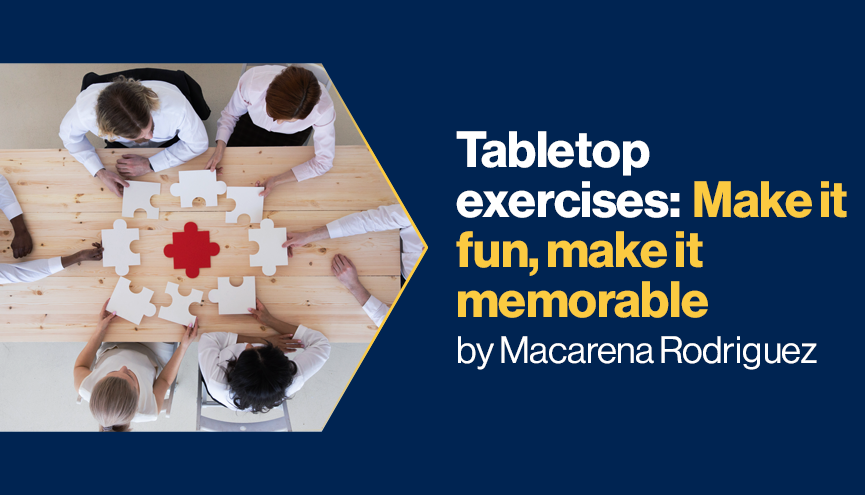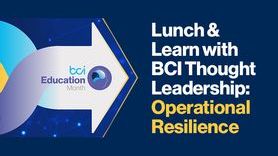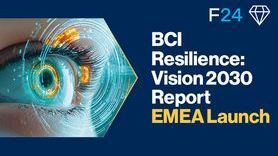Tabletop exercises: Make it fun, make it memorable

Have you ever visited a theme park? Or had a memorable theatre experience? I am pretty sure that most of you can name at least one memorable experience of this in your life. These memories might be different from one person to another, but they all have something in common – having a fun time. They were enjoyable times and therefore most of the details are memorable. This is the feeling that we would like to transmit to our tabletop participants.
The participants need to remember the procedures and the actions to be able to apply them in a real-life situation. Of course, the reality is never going to be exactly what we exercised and a real-life event is not going to be a pleasant situation. However, what we need to focus on in the exercise is making it memorable. Having fun could be one way to ensure this, in my opinion. As such, this article will highlight some tips to prepare a fun and memorable tabletop exercise.
Plan every single detail
As you would with every other project, write a report explaining the exercise preparations, the development of the exercise, and the way to draw lessons. Have this report approved by your management and make it as detailed as possible. When we put together a BCP, we always try not to plan every single detail as it might not be easy to enact. However, when designing an exercise, the more detailed it is the better. This is because you will be able to transmit confidence. By the way, for me, a detailed script is also a key aspect of this.
Train the participants in advance
To boost participation, they need to know what they are going to find. If you tell them, “please come and join us for this exercise” without further explanation, the chances of success will not be high. Whereas, if you set up individual interviews to explain what they might expect, those chances will increase significantly. Also, if you do it in a relaxing way they will empathize with you and with the requirements of the exercise.
Compensate their time
An exercise is an extraordinary activity that might not fit in the top management’s agenda. My recommendation is to schedule it months in advance and make it clear that their time will be well invested. Tell them that any plan needs to be exercised to see its validity but also, at the end, they are going to think it was time well invested. During the exercise, bring cookies and coffee and add their names to the table, thus personalizing the event. If the exercise is conducted virtually, send them postcards or any other idea that might engage them. As we say in Spanish, “what matters is the gesture”.
Choose a realistic scenario, make it fun
Please do not fall into the trap of the zombie apocalypse scenario. It might sound fun, but it is not appropriate for a work-related exercise. It is not realistic (ok, well, not yet) and it might not provide the skills that participants need to deal with a real-life event. Instead, choose a plausible scenario such as “floods in the data centre” and make it fun. Here are some ideas: Introduce the exercise with a news reel video, the injects might have a tight deadline, ask a colleague to play a third-party actor with some extreme requests, etc.
Prepare yourself
While you are facilitating the exercise, some soft skills will be needed such as creativity, time management, communication skills, positive attitude, etc. And let’s face it, not everyone is good at everything, but we can prepare for it. As we do not want to intervene, we need to function as facilitators. Make yourself a checklist (explain the roles, agenda topics, etc) and prepare in advance. Rehearse it like you are playing a scene and you can rehearse with your team or a colleague. If possible, I would also strongly advise participating in training for occasional trainers.
Context matters: a hybrid world
We cannot forget the theme of this year’s BCAW: “Building resilience in a hybrid world.” If your organisation adopted this working model, we need to account for it. Try to adapt your facilities to hold a hybrid exercise, using teleconference facilities and facilitating participation from the office and virtually.
This is definitely not an exhaustive list and I believe that sharing tips with other BC practitioners will enrich our exercises. So, do you have any other tips to consider? In case you would like to discuss the above ones with me, please out to me: info@bereadyforcontinuity









































